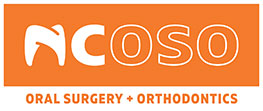Intravenous Sedation (IV Sedation) is perfect for patients with anxiety about visiting the dentist or an oral surgeon. That’s where IV sedation comes in. Since its inception, it’s helped many patients receive the oral surgery they need while feeling relaxed and completely comfortable.
If you opt for IV sedation, you will not experience any discomfort or pain. You’ll be able to receive dental treatments without being aware of any of the sounds, smells, and sights of the dental office. Although you will still have the ability to respond to verbal cues from the dentist, you probably won’t remember what happened at your appointment the next day.
What to Expect From IV Sedation
You are advised not to eat or drink anything eight hours prior to your surgery if using IV sedation. You are also required to have a legal parent or guardian, and/or driver over the age of 18 to drive you home. The driver must stay in the office during the entire procedure and may not leave during the surgery in case of emergencies.
Your surgeon will start an IV in your arm. He or she will also monitor your heart rate, oxygen level, pulse, and blood pressure throughout the appointment.
Who Is a Good Candidate for IV Sedation?
During your initial appointment, your surgeon will conduct an oral exam, evaluate your dental needs, and explain any procedures that they recommend. If you have a bad gag reflex, have trouble sitting in a chair for long period of time, or other issues, IV sedation may be recommended. Some patients who want IV sedation are not able to due to health reasons; it is up to the doctor’s discretion on whether or not the patient can have sedation
Contact NCOSO For IV Sedation
Our doctors are dedicated to providing each and every patient with an enjoyable experience that can be achieved through sedation. To learn more about IV sedation or schedule an appointment, contact NCOSO today.



